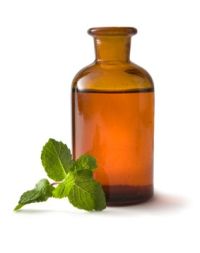Many people know Rosacea with having red, flushed face sometimes with small pimples or spider like veins. For the person experiencing the symptoms the skin can feel dry, itchy, hot or burning, stinging sensation, sensitive in the sun and easily blushes. Like most skin flare ups there is usually a trigger to cause the symptoms. Rosacea flare ups occur when something causes the blood vessels in the face to expand, which causes redness. It usually comes down to how stressed or run down you are, if your diet is triggering any auto-immune responses, or irritation from too much sun. Rosacea is an inflammation problem that comes out as a rash. It is similar in nature to acne, psoriasis, eczema and dermatitis.
Anti-Inflammatory foods
Inflammation on the skin can be a sign that you are experiencing inflammation in the gut. It is important to know what foods may trigger flare ups and other congested skin problems. Avoid common allergens and focus on anti-inflammatory foods like turmeric, ginger, garlic, onions and cruciferous vegetables (like broccoli and cabbage).
Omega 3 fatty acids and healthy fats: coconut oil, avocados, wild caught salmon, nuts and seeds. Omega 3 also helps to balance the hormones.
Make sure your gut does not have an overgrowth of yeast or bad bacteria by keeping your microbiome in good health. Use a good multi-strain probiotic as an every day supplement to support gut health which can be purchased in your local health shop.
For the skin
Don’t use toners that contain alcohol. If you use toners go for floral waters like rose water or witch hazel.
Vegetable oils: Calendula, rosehip, jojoba oil or coconut oil. Use the vegetable oils in combination or on their own. A lot of people use rosehip on its own.
Essential oils: neroli essential oil, roman chamomille or german chamomille (german is highly anti-inflammatory and calming), geranium or rose.
Only use essential oils in your blend of vegetable oil(s) if your skin is not too sensitive. The facial skin is thinner than anywhere else on the body so we only need a weak dilution blend of .5%. ie 1 drop in every 10mls of vegetable oil. See my article on How to Dilute Essential Oils for more.
Sun: Be mindful of wearing a sunscreen to prevent irritation from UV light. Use a natural physical broad spectrum sun cream which reflects sun rays unlike chemical sun creams which absorb the UV rays. Physical sun cream contains natural minerals like zinc oxide and titanium dioxide.
Managing Stress Levels
Many people feel mentally and emotionally challenged by this skin condition. Stress increases auto-immune responses and thus inflammation which triggers symptoms of Rosacea. While it is difficult to avoid stress, you are not helpless and can help to control the symptoms. You can empower yourself to find ways to beat stress. Educate yourself about the disorder and be open to trying new approaches and making certain changes in your lifestyle in order to help you feel more in control. Try stress reducing techniques like excercises, meditation whatever helps to soothe yourself.
Have you tried any other approaches that have helped reduce or manage your Rosacea? Let me know.
If you enjoyed this article and want to know more, check out our online courses or join our Aromatherapy Empowerment Facebook Group where we offer free advice & tips, recipes and more…



